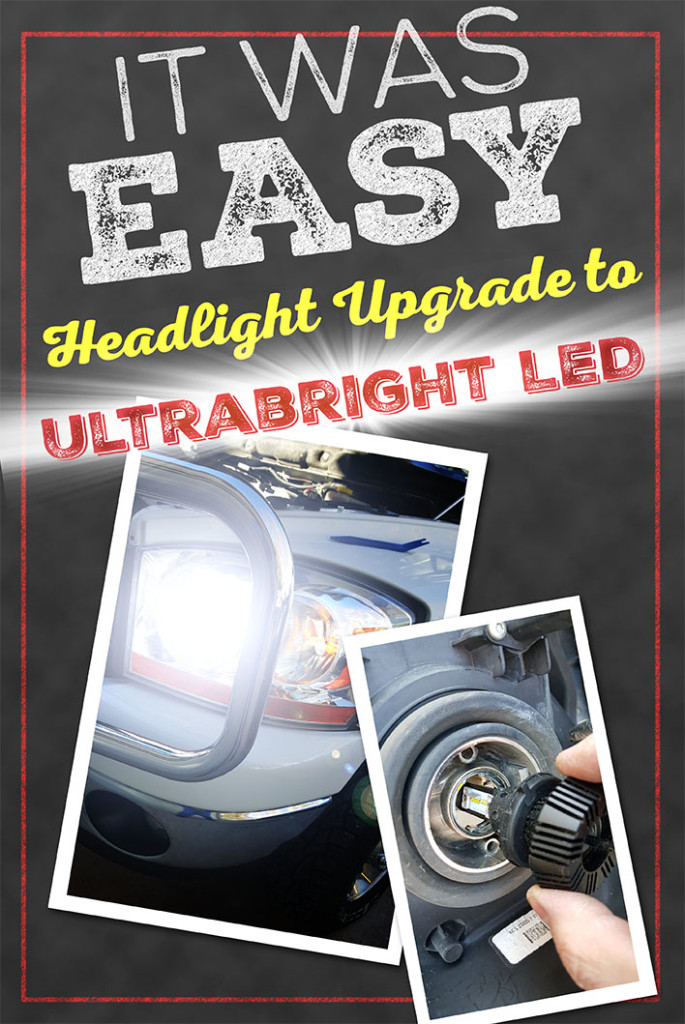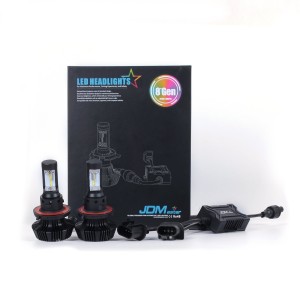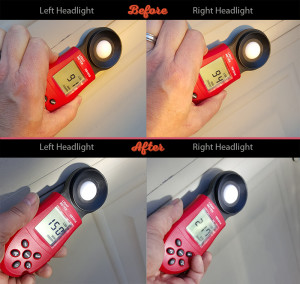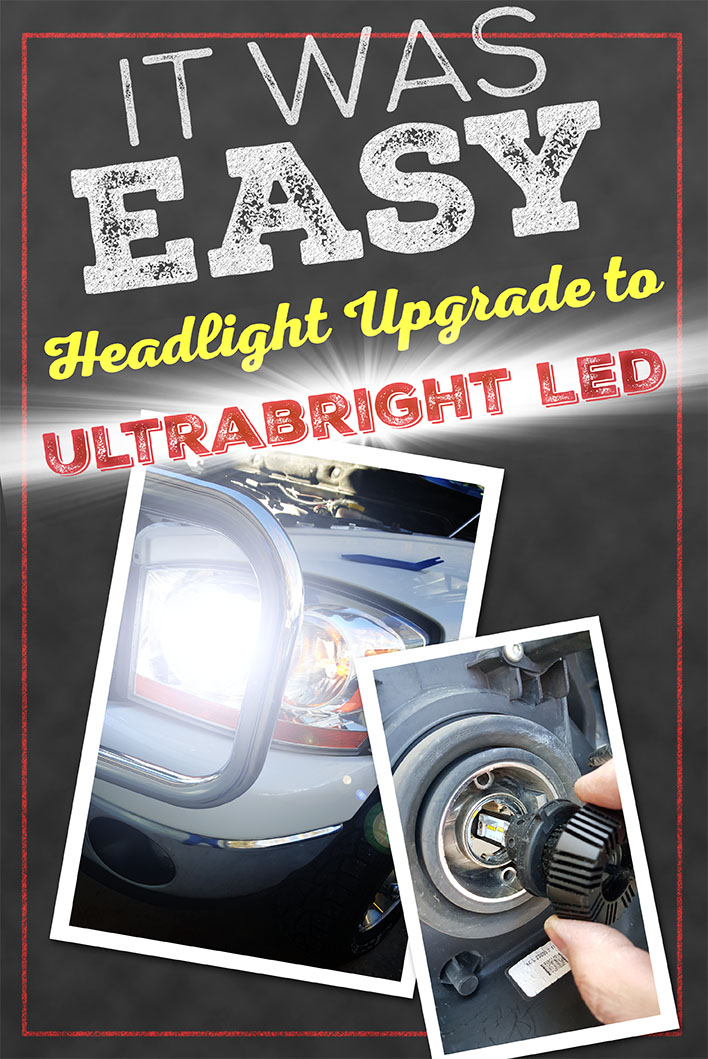
Installing the LED Headlight Upgrade was easy
Setting up and enjoying that perfect spot is the goal, but first we have to get there safely. After buying our tow vehicle – a Dodge Ram 2500 Cummings Diesel, our first night-time drive revealed the need to upgrade the headlights. Melissa’s daily driver came factory equipped with LED (Light Emitting Diode) headlights. They are bright, crisp and provide amazing detail. One drive in the pickup with it’s incandescents and we were struggling to see better in the dark. The lights weren’t dim by any stretch, just not what we have become accustomed to with the LEDs in the Nissan, and we just didn’t feel as safe on dark roads. It was clear we wanted better lighting.
First stop was google to do some research then off to Amazon for these Ultra Bright LED lamps made by JDM Astar. Their product and their customer service are both amazing and I highly recommend them. In fact after buying the headlights, we bought all of our other LED upgrades for the truck AND the camper from them.
Clocking in at 7000 Lumens each they are a power-house of light, and being LEDs they require much less electricity to run than the old 60Watt incandescent bulbs they replaced. That’s less load on your batteries while parked during setup, and less load on your alternator when driving which in-turn means increased fuel economy. When you order your bulbs, be sure to verify that the lights will fit your vehicle, AND also work with the computer system. Our truck uses a CANBUS system and thus requires the special module you see in the picture. One of the tasks of this module is to fool the computer into thinking the LEDs are drawing more current than they actually are. Without the module, the computer actually thinks your lamps are burned out! That’s just how low the current draw is on these LEDs.
First let’s get geeky for just a minute – or you can skip the next couple of paragraphs if you prefer. When you purchase LEDs the brightness is advertised in Lumens. When we used to buy incandescent bulbs for our homes, they were advertised in Watts. The more watts a bulb consumed, the brighter it was – I.e. the more lumens it emitted. Watts became an informal standard for advertising a bulb’s brightness, even though different 60W bulbs could produce different amounts of light. This false standard of watts=light output is still used in marketing today as you will see when you are buying CFL (Compact Fluorescent Lights) and LEDs for the home – they all give you an actual consumption in watts and a “compared to” wattage for an incandescent of equivalent brightness.
The amount of light being emitted by a light-source is measured in Lumens, but when that light is falling on a surface – lets say the road, it is measured in Lux. Additional geek points here: 1 Lux = 1 Lumen falling on 1 Square Meter of surface, 2 lux = 2 lumens falling on 1 square meter of surface etc. So 1000 lumens falling on 1 square meter = 1000 lux. That same 1000 lumens falling on 10 square meters = 100 lux.
Keep in mind that this is linear math. 2 lux is twice the light of 1 lux, 4 is twice that of 2, 100 is twice that of 50 and so on. And for extra geek pints: The human eye builds it’s best detail from green wavelengths of light. The less green emitted by a light, the less detail the eye sees. More on how this applies later.
Since headlight illumination is not perfectly even, I used my Lux meter to find the brightest are and provided those readings, approximately 3 feet from the headlights. I measured right up against the garage door for consistency as distance will affect the reading. Note the X100 showing on the Lux meter below the reading: 91=9100 217=21700 etc.

It’s pretty clear that the 60 watt Phillips Incandescents just don’t compare to the level of illumination from the LEDs.
The left lamp saw a +64% change in lux and the right a whopping +130% gain! Why the difference? It appears to have something to do with either the reflectors or the lenses on the headlight housings and not the bulbs. I swapped the LED bulbs around and got nearly identical readings to these. Go figure.
It’s not just how much light that matters
While brightness is certainly important, also important it the color of the lightsource. Color is measured in Degrees Kelvin, and the lower the kelvin the “warmer” the light, the higher the kelvin, the “cooler” the light. It’s important to consider that the human eye builds the bulk of it’s detail from the green wavelengths of light. The more green light available, the more detail the eye will build from the scene. While the red-orange of the 3000 kelvin incandescent contains more red than green light. The whiter 6500 kelvin LEDs have nearly equal amounts of most all visible colors. This means more green light for better detail. So we’re not just getting more light, we’re also getting more detail per lumen of output – SCORE!
The end result is a much safer night time driving experience. Safer for us, pedestrians, cyclists, the wildlife, and others on the road.




